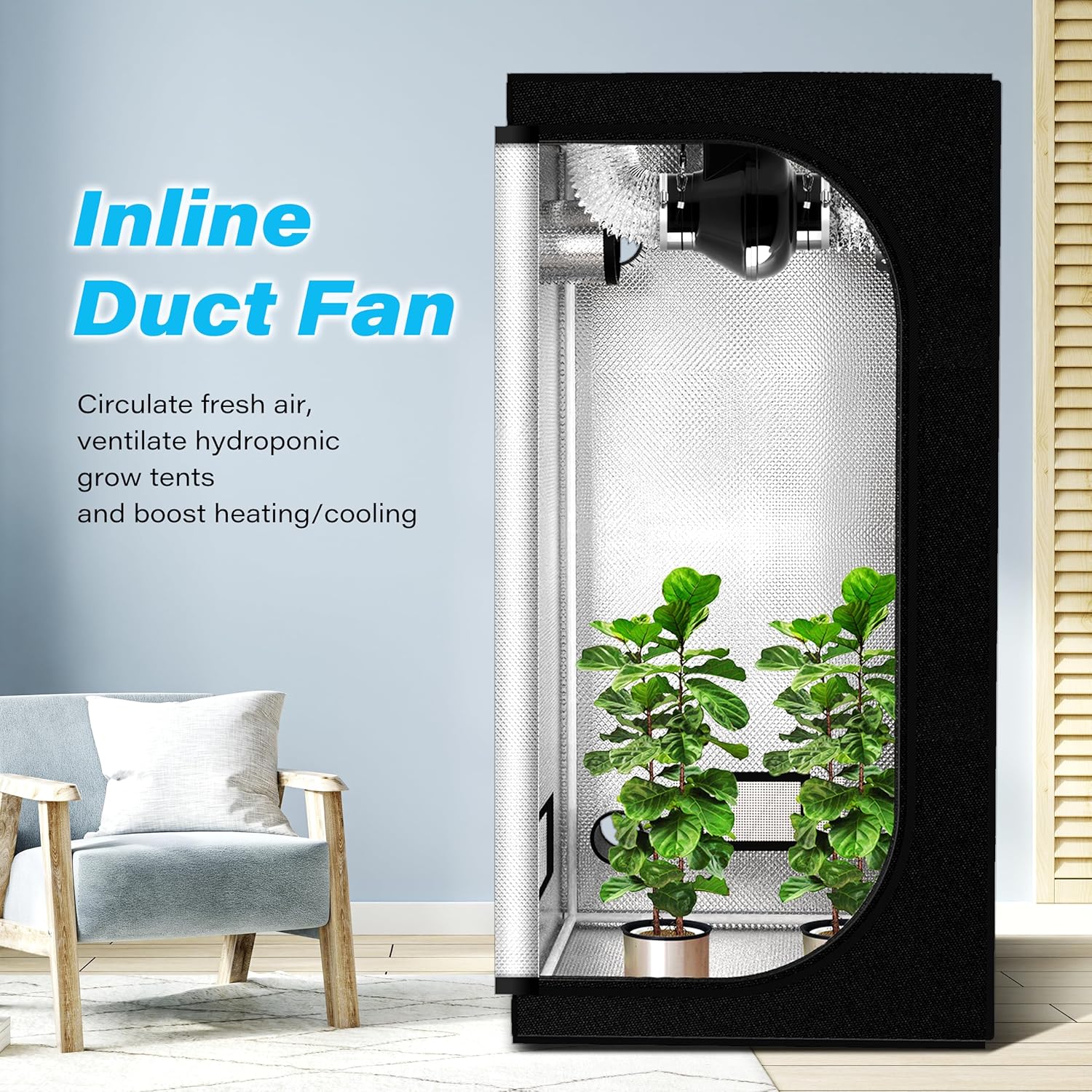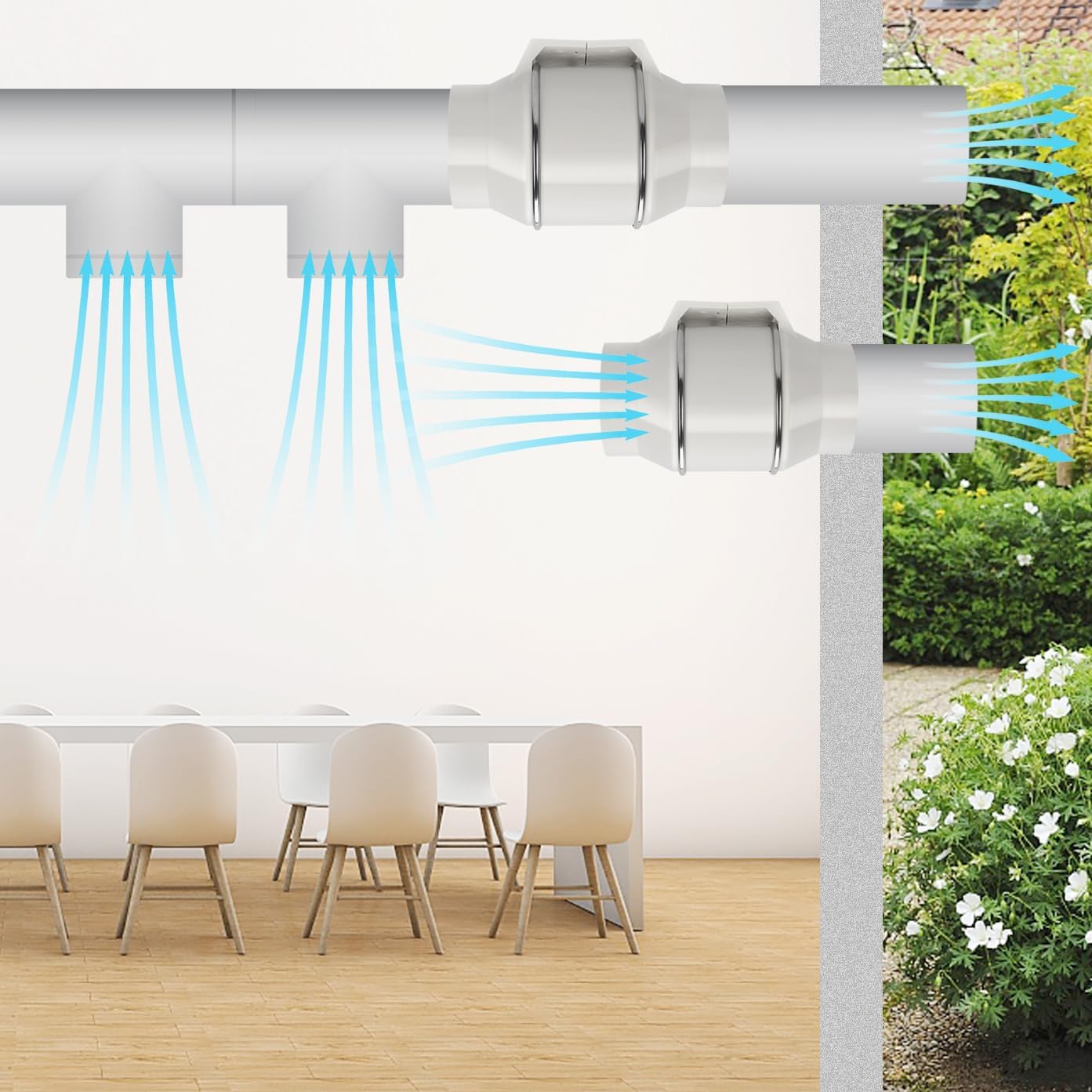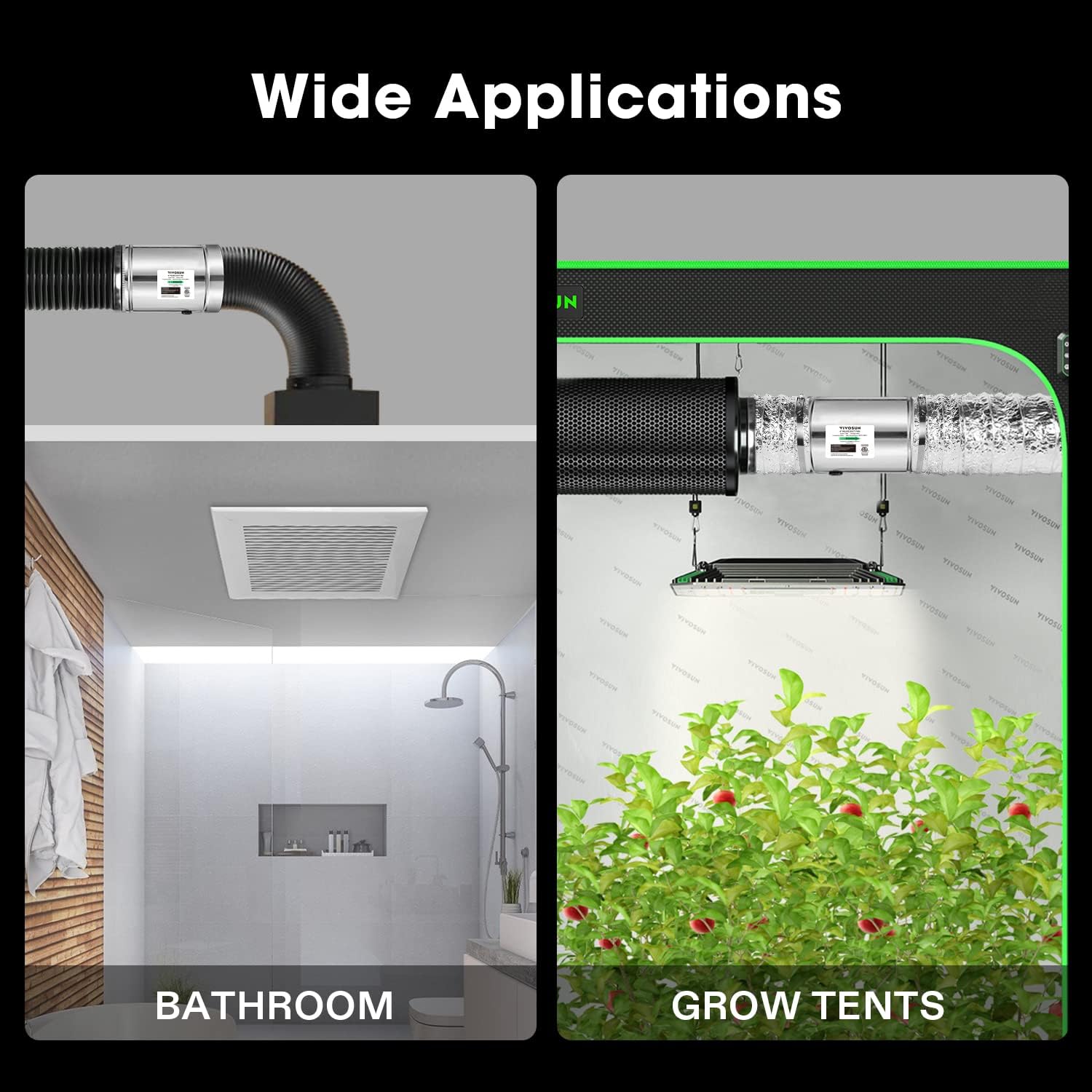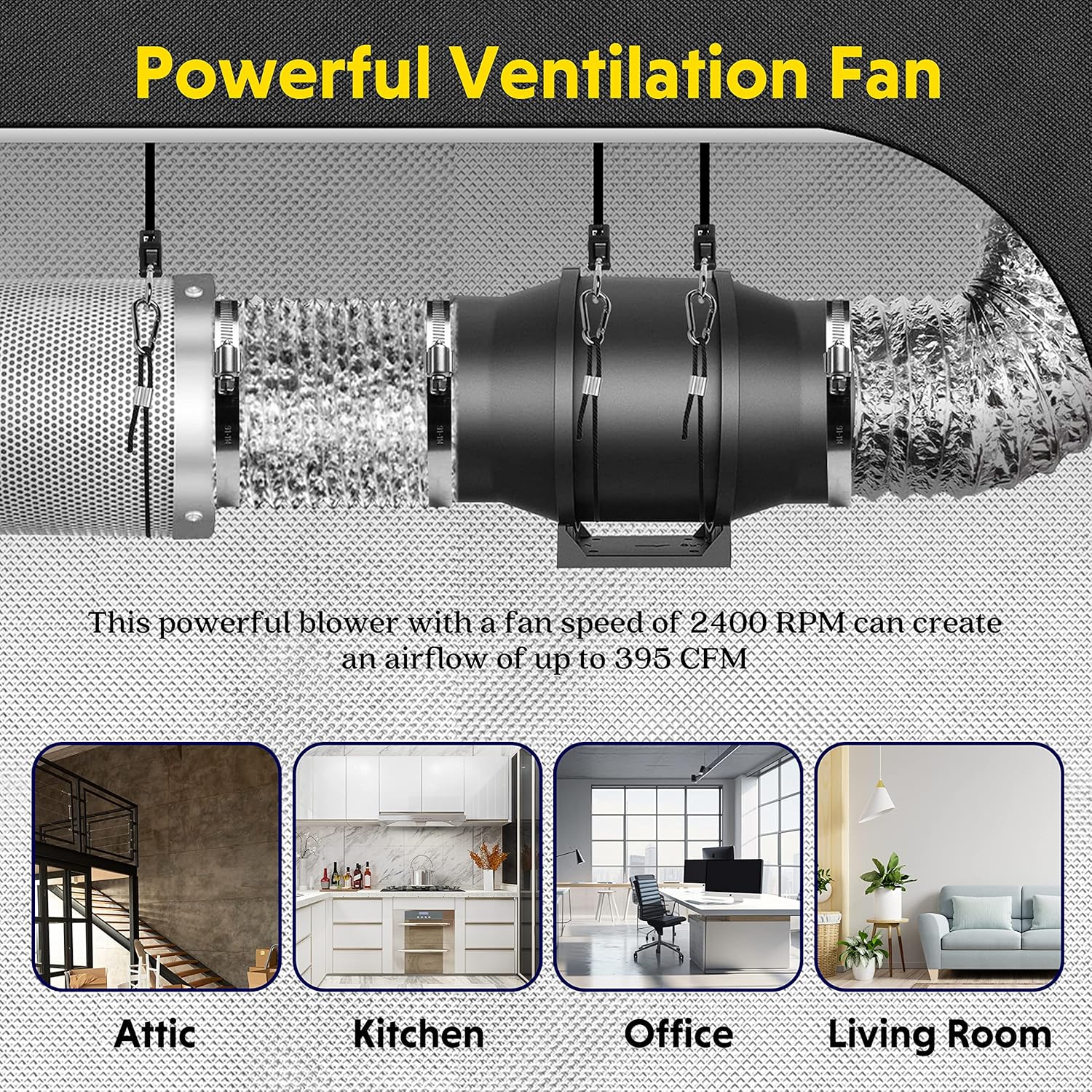What exactly is an inline duct fan and how does it operate?
An inline duct fan is a specialized type of fan designed to be installed directly within ductwork, forming an integral part of a ventilation system. Unlike ceiling or wall-mounted fans, these units are typically hidden from view, operating discreetly within the ducts. They work by drawing air from one area and expelling it to another, or to the outside, effectively boosting airflow through the ducting. Our high-performance Inline Duct Fan System, for example, is engineered to seamlessly integrate into your existing ventilation setup, enhancing air circulation efficiently. This makes them ideal for situations where airflow needs to be increased over longer duct runs or where a more powerful and targeted ventilation solution is required. They are crucial for maintaining good air quality in various indoor environments.
What are the key benefits of using an inline ventilation fan?
Utilizing an inline ventilation fan offers numerous advantages for improving indoor environmental quality. Firstly, they significantly enhance air circulation, ensuring a constant supply of fresh air while expelling stale, polluted, or humid air. This is crucial for removing lingering odors, such as those from kitchens or damp basements. Our models, for instance, are designed for powerful airflow, tackling everything from kitchen aromas to damp air in basements and ensuring pristine breathability in offices or warehouses. Secondly, many advanced inline fans, including ours, operate with whisper-quiet performance, making them perfect for environments where noise levels are a concern. Additionally, modern inline ventilation fan units are often energy-efficient, helping to reduce utility bills without compromising on performance. The sleek and compact design also means they don't take up valuable space and can be easily integrated into existing ductwork.
When looking for a high airflow inline fan, what factors should I consider?
Choosing the right high airflow inline fan depends on several factors tailored to your specific needs. You'll need to consider the size of the space you intend to ventilate, as larger areas or longer duct runs will require a fan with a higher CFM (cubic feet per minute) rating. The diameter of your existing ductwork is also critical; the fan must match the duct size for optimal performance. Think about the application – a fan for a busy commercial kitchen will have different requirements than one for a residential bathroom. Our products, for example, cater to this versatility, being suitable for robust applications in offices, cafeterias, or warehouses, tackling kitchen aromas, or removing damp air from basements. Also, consider noise levels if the fan is to be installed near living or working spaces, and look for energy efficiency to save on operational costs. A durable build quality ensures longevity, especially in demanding environments.
Are inline duct fans suitable for commercial applications?
Yes, absolutely. Inline duct fans are highly suitable for a wide range of commercial applications due to their power, durability, and efficiency. A commercial inline duct fan is often built to withstand continuous operation and can move large volumes of air, which is essential in spaces like restaurants, workshops, warehouses, factories, and large office buildings. They play a vital role in maintaining air quality by exhausting fumes, smoke, heat, and pollutants, and can also be used to supply fresh, conditioned air. Our robust inline fan systems are designed to perform in such demanding environments, ensuring optimal air distribution in busy industrial zones, keeping warehouses well-ventilated, and maintaining fresh air in bustling offices or cafeterias. The ability to integrate seamlessly into existing HVAC systems makes them a practical choice for commercial inline duct fan needs.
Can an inline duct fan serve effectively as an inline exhaust fan?
Indeed, one of the primary functions of an inline duct fan is to act as an inline exhaust fan. By installing it within the ductwork, it can efficiently pull stale, moist, or contaminated air from a specific area and expel it outside or to another designated ventilation point. This is particularly useful in spaces like bathrooms to remove steam and prevent mold growth, kitchens to exhaust cooking odors and grease-laden air, workshops to remove fumes and dust, or in grow tents to manage humidity and temperature. Our inline duct fans are designed to be powerful and reliable, making them an excellent choice for any inline exhaust fan application, effectively removing unwanted airborne particles and improving overall air quality. Their design allows them to handle the demands of various exhaust tasks with efficiency.
What distinguishes an inline duct fan from an inline blower fan?
While the terms inline duct fan and inline blower fan are often used interchangeably, and both are designed to move air through ductwork, there can be subtle distinctions depending on the specific design and application. Generally, an inline blower fan might imply a unit designed to generate higher static pressure, making it suitable for systems with more resistance, such as complex ductwork or those requiring air to be pushed through filters or other components. However, many modern inline duct fans, especially high-performance models like ours, incorporate blower-like characteristics to effectively manage airflow even in challenging setups. Both types are installed in-line with the ducting and share the common goal of enhancing air movement. The key is to choose a unit whose specifications (CFM, static pressure, power) match the requirements of your ventilation system, whether it's labeled as a fan or a blower fan.
How complex is the installation process for HVAC inline fans?
Generally, the installation of HVAC inline fans is quite straightforward, especially for those with some DIY experience or for professional installers. Our inline duct fan, for example, is designed to be user-friendly for quick setup. Installation typically involves cutting a section of the existing ductwork, inserting the fan, and then securing it in place with clamps or screws, followed by wiring it to a power source, often through a switch or controller. It's important to ensure all connections are airtight to maintain system efficiency. While the basics are simple, complexities can arise depending on the location, existing ductwork configuration, and electrical requirements. For safety and optimal performance, it's always recommended to follow the manufacturer's instructions carefully or hire a qualified HVAC technician if you're unsure. Many HVAC inline fans are designed for easy integration into standard duct sizes, which simplifies the process.
Can I effectively use an inline duct fan as an inline cooling fan?
Yes, an inline duct fan can contribute significantly to cooling efforts when used strategically as an inline cooling fan. While it doesn't produce cold air like an air conditioner, it excels at improving air circulation. By moving air from cooler areas to warmer areas, or by exhausting hot, stagnant air from a space (like an attic or a server room), it helps to lower the ambient temperature and improve comfort. In grow tents or greenhouses, an inline cooling fan is crucial for managing heat buildup from lighting and ensuring plants don't overheat. Our versatile fan system can help maintain a balanced temperature by ensuring consistent airflow, making spaces feel cooler and more comfortable, especially in industrial workshops or garages where heat can accumulate.
What features should I look for to find the best quiet inline fans?
When searching for the best quiet inline fans, several features are paramount. Noise level, measured in decibels (dB) or sones, is the most critical factor; look for models specifically engineered for low-noise operation. Our advanced model, for instance, is designed for ultra-quiet performance. The motor type and quality play a significant role – electronically commutated (EC) motors are often quieter and more energy-efficient than traditional AC motors. Look for dynamically balanced blades and high-quality bearings, which reduce vibration and operational noise. The fan housing design can also contribute to noise reduction if it's aerodynamically optimized and well-insulated. Some of the best quiet inline fans also offer variable speed control, allowing you to run the fan at lower, quieter speeds when maximum airflow isn't necessary. Proper installation, including using insulated ducting or vibration dampeners, can further minimize noise transmission.
In which types of environments can inline duct fans commonly be used?
Inline duct fans are incredibly versatile and can be used in a multitude of environments to enhance air quality and circulation. In homes, they are perfect for boosting airflow to distant rooms, ventilating bathrooms to remove moisture, or as part of a kitchen exhaust system to eliminate cooking odors. Our inline fan harmonizes perfectly with modern home aesthetics. For commercial settings, they are ideal for offices, retail spaces, restaurants, and workshops. Industrial applications include warehouses for consistent air circulation, garages to clear fumes, and manufacturing facilities. Specialized uses extend to greenhouses and grow tents, where they provide optimal airflow for plant health, helping to maintain ideal temperature and humidity. Whether it's a compact kitchen, an expansive warehouse, a tools room, or a high-humidity bathroom, a robust inline duct fan system, like the ones we offer, provides a powerful and adaptable solution for virtually any space needing improved ventilation.
Why should I consider Ningbo Aoshun Electrical Co., Ltd. for my inline duct fan and ventilation needs?
Choosing Ningbo Aoshun Electrical Co., Ltd. for your inline duct fan means partnering with a company that prioritizes flexibility in sourcing, designing, and producing innovative electrical products, ensuring we remain competitive and responsive to your needs. We offer a significant advantage with our one-stop purchasing solution for all electrical needs, encompassing a wide business scope that includes ventilation fans, exhaust fans, inline duct fans, industrial fans, and various ventilation accessories. Our commitment to customer and supplier relationships is evident through our growing national representative network and strategic investments in logistics—offering sea, air, express, and rail options—to ensure exceptional service worldwide. When you choose our high-performance inline duct fans, you're not just getting a product engineered for sleek design, powerful airflow, whisper-quiet operation, and energy efficiency; you're also benefiting from our industry experience and dedication to quality, serving wholesalers, buyers, and retail customers effectively. For reliable and advanced ventilation solutions, contact us at +86 18606589361.





